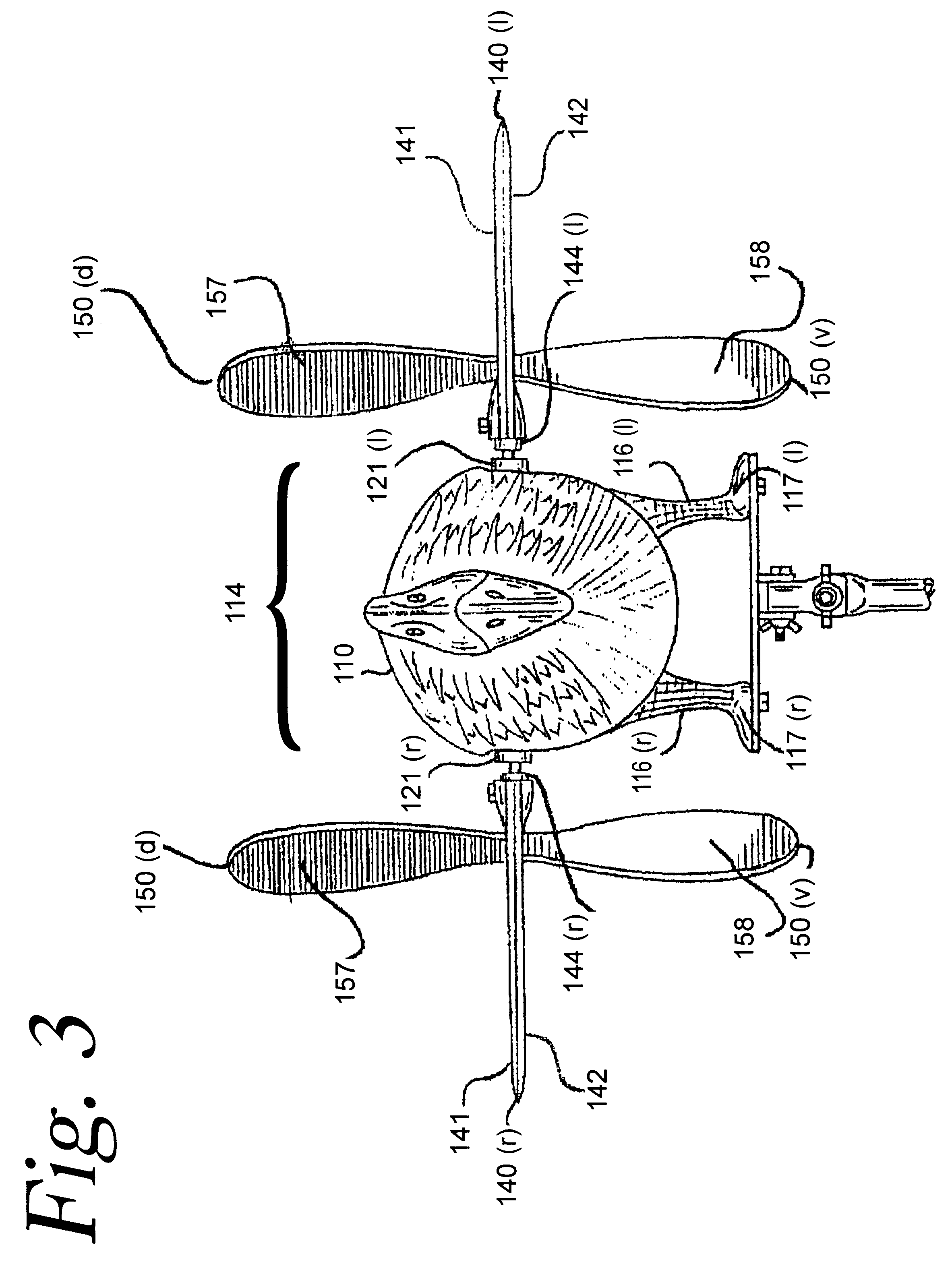Decoy apparatus with adjustable pitch rotor blade wing assembly
a technology of rotor blades and rotor blades, which is applied in the field of decoy apparatuses, can solve the problems of environmental damage to and limited effectiveness of decoys employing motorized systems for animation
- Summary
- Abstract
- Description
- Claims
- Application Information
AI Technical Summary
Benefits of technology
Problems solved by technology
Method used
Image
Examples
Embodiment Construction
The preferred embodiment of the waterfowl decoy apparatus 600 is shown in FIG. 18. The preferred embodiment of waterfowl decoy apparatus 600 generally consists of wingless imitation waterfowl structure 110, shaft housing 620 as shown in FIG. 25, FIG. 25(a) and FIG. 25(b), bearing members 622(l) and 622(r) as shown in FIG. 24 and FIG. 25, a shaft member 630 as shown in FIG. 19, FIG. 24 and FIG. 25, a wing 640(l) and a wing 640(r) as shown in FIG. 19, dorsally-located rotor blade members 650(d) and ventrally-located rotor blade members 650(v) as shown in FIG. 22. The preferred embodiment is virtually identical to the alternative embodiments of waterfowl decoy apparatus 100, waterfowl decoy apparatus 200 and waterfowl decoy apparatus 300 save for its shaft housing 620, its bearing members 622(l) and 622(r), its shaft member 630, its wing 640(l) and wing 640(r), its dorsally-located rotor blade members 650(d), its ventrally-located rotor blade members 650(v), and an additional pitch con...
PUM
 Login to View More
Login to View More Abstract
Description
Claims
Application Information
 Login to View More
Login to View More - R&D
- Intellectual Property
- Life Sciences
- Materials
- Tech Scout
- Unparalleled Data Quality
- Higher Quality Content
- 60% Fewer Hallucinations
Browse by: Latest US Patents, China's latest patents, Technical Efficacy Thesaurus, Application Domain, Technology Topic, Popular Technical Reports.
© 2025 PatSnap. All rights reserved.Legal|Privacy policy|Modern Slavery Act Transparency Statement|Sitemap|About US| Contact US: help@patsnap.com



